While woodchucks are renowned in pop culture for chucking wood, their real talents lie elsewhere. Woodchucks, also known as groundhogs or whistle pigs, are incredible architects, champion sleepers, and talented construction workers.
A member of the Sciuridae family, the woodchuck (Marmota monax) is a rodent that falls under the group of large ground squirrels known as marmots. They can be found in both suburban and rural areas across the eastern United States and southern Canada. Their northern range stretches from the eastern coast of Canada as far west as Alaska.
While the woodchuck’s range is impressive, their territories are relatively small. A woodchuck’s territory is rarely larger than 2-3 acres, though males sometimes travel farther in search of females. While territories span several acres, these animals spend most of their time within 150 feet of their burrow. The burrow is its home base and is used for evading predators, mating, raising young, and hibernating. These burrows are remarkable feats of construction, and their impressiveness is second only to the extraordinary abilities of whistle pigs. Here are six impressive facts about the talented woodchuck.
1. Woodchucks Have Bathrooms
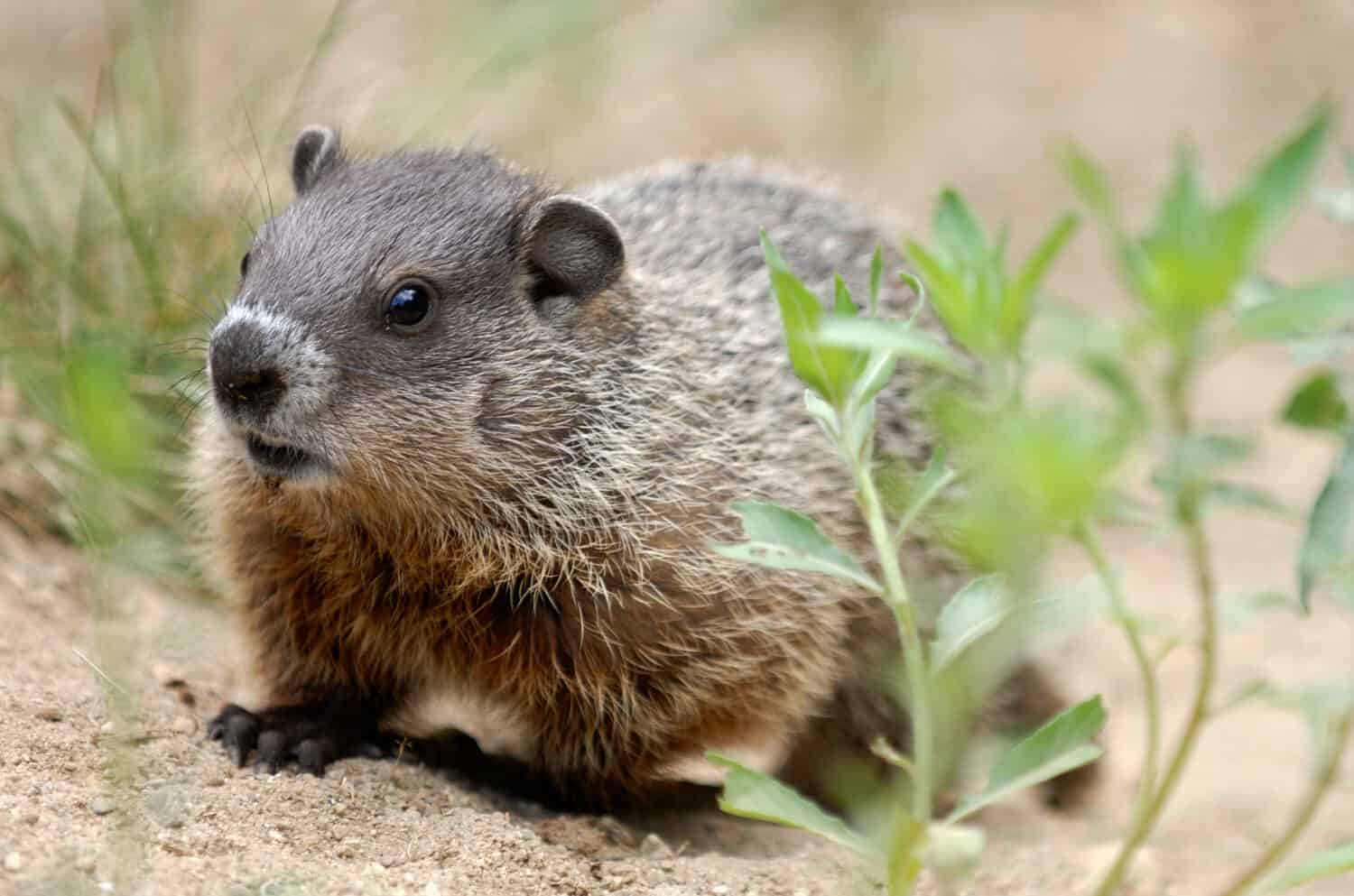
While woodchucks usually burrow in woodland areas, they will make dens below sheds or porches in suburban locales.
©zixian/Shutterstock.com
A woodchuck’s burrow is a carefully designed dwelling. Woodchucks dig from the surface to create tunnels that are 10-12 inches in diameter. The initial tunnel from the entrance drops steeply for up to 6 feet before rising back up for several feet. This drop and subsequent incline prevent the entire burrow from flooding if water gets in. After the incline, the burrow levels off into a tunnel up to 25 feet long.
From the main tunnel, secondary tunnels are dug leading to separate “rooms.” One room is used as the true den, where the woodchuck will sleep, hibernate, and raise their young. Other areas are designated as bathrooms or latrines.
Incredibly clean animals, woodchucks exclusively use these latrine areas for waste. Once a bathroom gets too dirty, the woodchuck will seal it off and dig a new one. By limiting waste to specific areas, the burrow remains clean, which lowers the risk of disease.
2. They Are Nature’s Backhoe
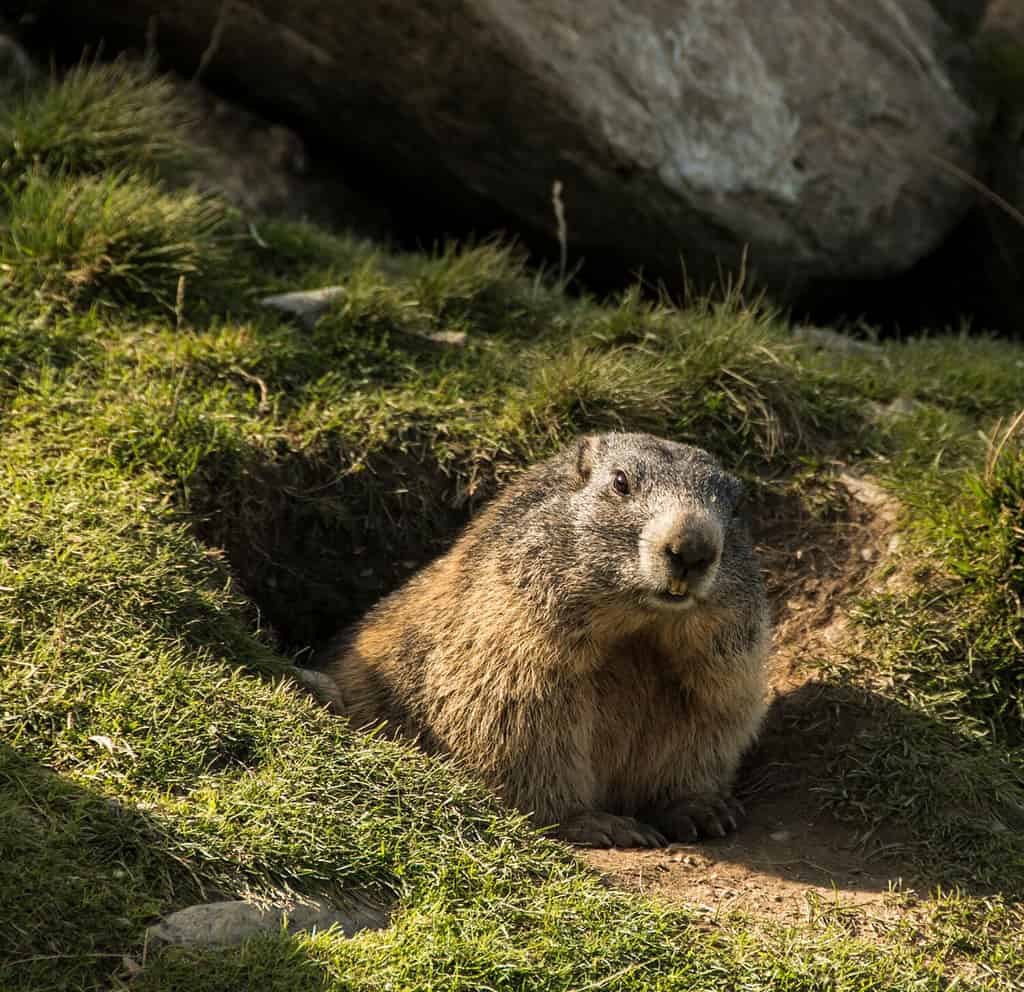
Woodchuck burrows are often used by other animals, including foxes, opossums, and rabbits.
©Mitch Shark/Shutterstock.com
In total, these elaborate burrows include up to 40 feet of tunnels. Creating these tunnels means removing a lot of dirt. Luckily, these animals are skilled excavators. They can move up to 700 pounds of dirt per day, equaling 35 cubic feet of soil. In total, woodchucks move up to 5,500 pounds of soil to create a burrow.
To do this, they first loosen soil and rocks with their front legs. A woodchuck’s legs are short but extremely powerful, and they are equipped with sturdy claws. The animals have to be incredibly strong: Not only do they have to move tons of soil to make the burrow, but they also have to be able to escape out of it if a tunnel collapses. When this happens, they must use their strong feet to push through the dirt to get out from underneath.
Once the soil is loose, the animals carry it out of their burrows using their mouths. Burrow entrances are easily identifiable by the mounds of excavated dirt surrounding them. However, secondary entrances are harder to spot. While woodchucks will dig an average of four additional burrow entrances, they excavate these from below, so loose soil falls down into the tunnel mouth rather than being piled around it.
Building the burrow is a solo undertaking, as only one animal will inhabit the den for most of the year. This means that a single woodchuck must move all of this soil on their own.
3. They Are Hard-Headed Animals
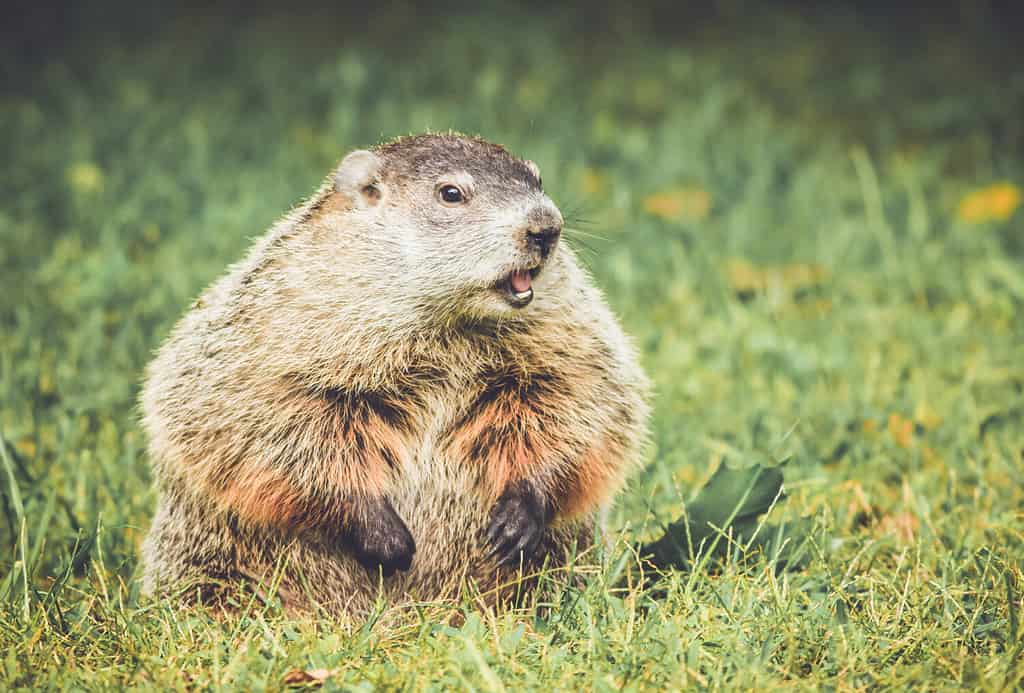
While most whistle pigs weigh 7-13 pounds, the largest one on record in Ohio weighed just over 16 pounds.
©Rabbitti/Shutterstock.com
To dig tunnels through dense soil and rocky dirt, woodchucks have to be incredibly strong. Much of that strength is in their head! Woodchucks have strong muscles that support a heavy skull that is thicker than that of similarly sized animals.
Woodchuck heads are trowel-shaped for a good reason: They use their short, wide heads as a shovel to excavate their burrows. To prevent themselves from getting an earful of dirt while they dig, woodchucks have flaps in their ears that close so the soil can’t get in. Thanks to their dense skulls, woodchucks can survive a blow to the head that would kill most other animals of the same size.
4. Woodchucks Are Excellent Swimmers and Climbers
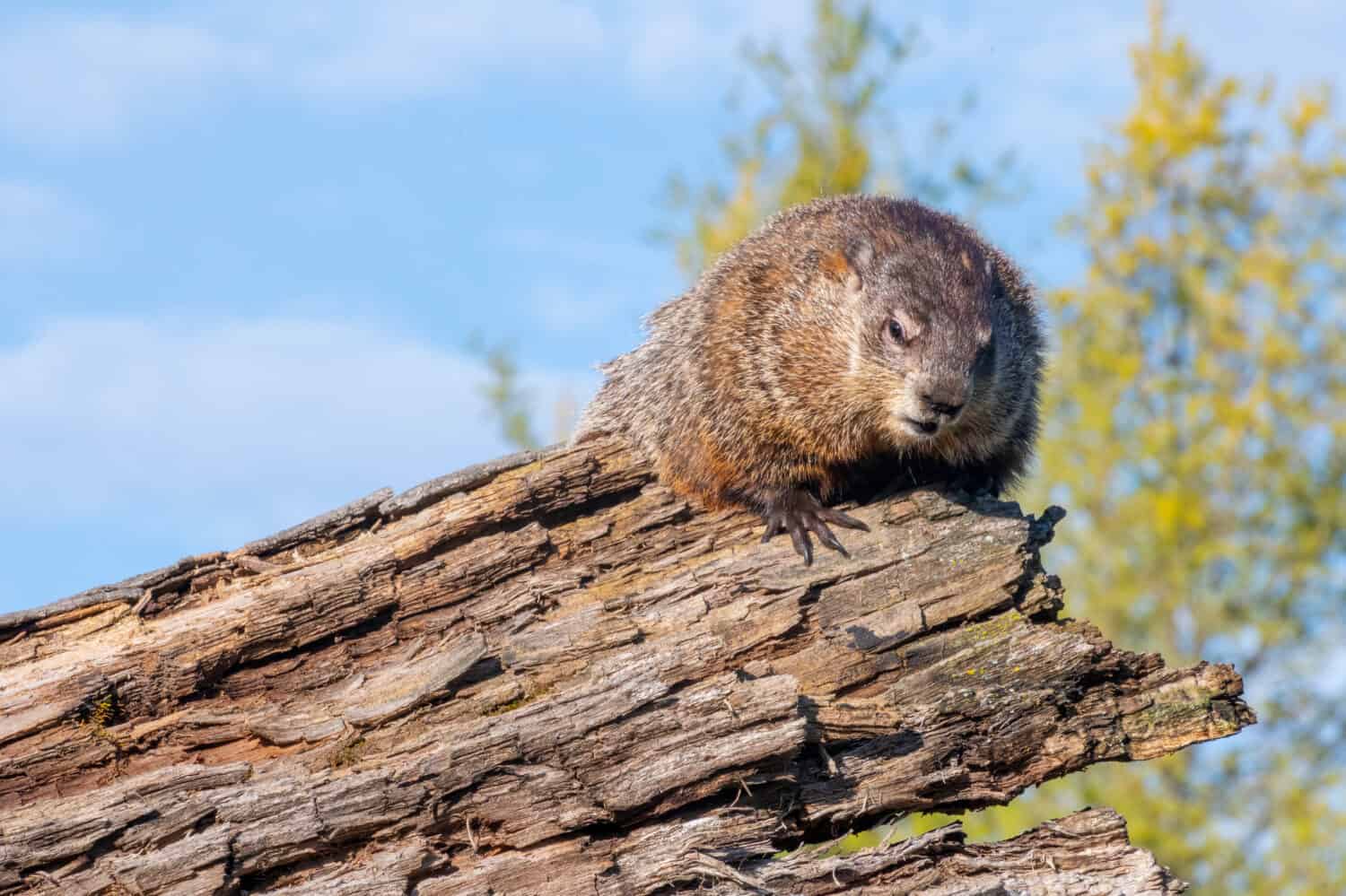
Climbing is easy thanks to the animal’s strong claws that can puncture tree bark.
©Evelyn D. Harrison/Shutterstock.com
While you don’t generally picture a squirrel in a pond, woodchucks are excellent swimmers. Going for a dip isn’t their first choice (they prefer to be dry), but it is an excellent way to evade predators. They aren’t particularly fast swimmers and only swim at an average speed of around 3 kmph (approximately 1.86 mph), but their webbed feet make them very adept in the water. They can plunge deep into the water and hold their breath for up to 5 minutes.
In addition to being good swimmers, woodchucks are skilled climbers! Their sharp, strong claws make scaling trees and other surfaces simple, and they have been known to climb trees over 15 feet tall. They generally climb to avoid predators, but will also climb to feed on berries or leaves.
5. Naps Last 4 Months
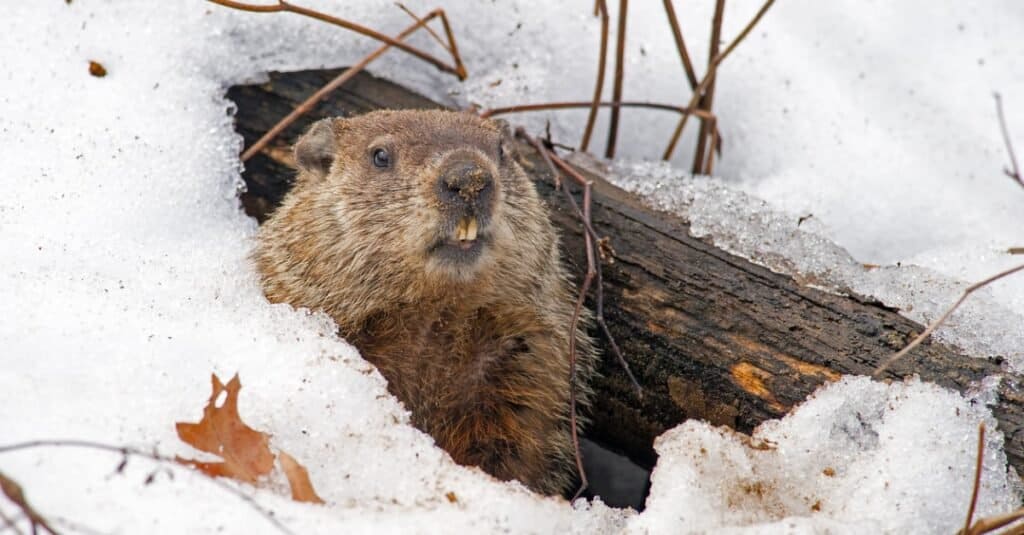
A woodchuck’s internal clock for hibernation is not tied to weather, and they will often emerge from hibernation before the snow melts.
©iStock.com/BrianEKushner
Woodchucks are often seen sunbathing or sleeping at the entrances to their den, but their real rest comes in the winter. One of North America’s only true hibernators, woodchucks enter hibernation in November and stay in this state until February. During this time, the animal stays in its burrow and doesn’t wake up at all.
To survive in this stasis, a woodchuck’s heartbeat slows from 80-100 beats per minute to just 4-5 beats. Its body temperature drops from a normal 98.6°F to 38°F. Since the animal doesn’t wake up even to eat or drink, it relies on fat stores that build up during the summer and fall. Since they only pull from existing fat, woodchucks lose around 30 percent of their body weight during hibernation. When they do emerge from hibernation, they need to begin eating again.
6. Woodchucks Eat Voraciously

Woodchucks primarily eat clover, dandelions, and grasses, but will also raid gardens for lettuce, carrots, corn, and fruit.
©Lisa Basile Ellwood/Shutterstock.com
Once woodchucks emerge from hibernation, they take eating very seriously. Woodchucks consume over a pound of vegetation at a time during the warmer months. This amount may not seem like a lot, but it’s equivalent to a 100-pound person eating 10 pounds of food in one meal! Woodchucks usually eat twice a day and aren’t picky about their diet, happily consuming greens, vegetables, fruits, and even bark, small insects, and snails when other food isn’t plentiful.
Summary of Woodchuck Facts
| Woodchuck Fact | Did You Know… |
|---|---|
| 1. Woodchucks have bathrooms | Burrows are very elaborate and include separate areas for sleeping, waste, and even drainage. |
| 2. They are nature’s backhoe | A woodchuck can move up to 700 pounds of dirt per day. |
| 3. They are hard-headed animals | Woodchucks use their hard, shovel-shaped heads to excavate their burrows. |
| 4. Woodchucks are excellent swimmers and climbers | They will go into bodies of water or climb up trees to evade predators. |
| 5. Naps last 4 months | Hibernation begins in November and lasts into February. |
| 6. They eat voraciously | A woodchuck can eat up to a pound of vegetation in one sitting. |
The photo featured at the top of this post is © jan ptacek/Shutterstock.com
Thank you for reading! Have some feedback for us? Contact the AZ Animals editorial team.







